Structural Integrity Assessment of Concrete Sleepers by Modal Test Technique
Abstract
1. Introduction
2. Visual Inspection of Damaged Concrete Sleepers
3. Impact Hammer Testing of Damaged Concrete Sleepers
3.1. Measurement System Overview
3.2. Result of Each Sleeper Frequency Response Function Calculation
4. Numerical Analysis
5. Correlation between Damage to the Concrete Sleeper and Natural Frequency
6. Conclusions
- For 20 damaged concrete sleepers, the measured natural frequencies obtained using the impact hammer test were approximately 42–93% of that predicted for normal conditions by numerical analysis (149.35 Hz). According to the FRF-based estimation results, the change in dynamic mass caused by the damage to concrete sleepers was negligible, whereas dynamic stiffness significantly differed among sleepers. Furthermore, the measured damping ratio of each sleeper was 3 ± 0.5%, which is the material damping level of concrete; this indicates that the effect of sleeper damage on the damping ratio was small.
- A comparative analysis of the modal-testing, analytical, and visual-inspection results showed that the measured natural frequencies of the two concrete sleepers classified as similarly damaged in the visual inspection were, respectively, 20 and 49% smaller than the calculated natural frequency under normal conditions. This experimentally and analytically demonstrates the limitations of evaluating the structural integrity of concrete sleepers solely by their visual state.
- Natural-frequency analysis through modal testing can be used for quantitatively evaluating the structural integrity of many sleepers easily in a short time. Therefore, considering the difficulty of night-time inspections on operational lines, the proposed modal-testing method provides a complementary method of visual-inspection-based sleeper-condition assessment in the field.
Author Contributions
Funding
Institutional Review Board Statement
Informed Consent Statement
Data Availability Statement
Conflicts of Interest
References
- Choi, J.Y.; Shin, T.H.; Chung, J.S. Damage cause analysis of concrete sleepers for sharp curved track on urban railway bridge. J. Converg. Cult. Technol. (JCCT) 2021, 7, 517–522. [Google Scholar]
- Korea National Railway. Guidelines for Track Facility Performance Evaluation; Korea Ministry of Land Infrastructure and Transport (MOLIT): Sejong, Republic of Korea, 2022. (In Korean)
- Choi, J.Y. Qualitative Analysis for Dynamic Behavior of Railway Ballasted Track. Ph.D. Dissertation, Technical University of Berlin, Berlin, Germany, February 2014. [Google Scholar]
- Remennikov, A.; Kaewunruen, S. Investigation of vibration characteristics of prestressed concrete sleepers in free-free and in-situ conditions. In Proceedings of the Australian Structural Engineering Conference 2005 (ASEC 2005), Newcastle, Australia, 11–14 September 2005. [Google Scholar]
- Kaewunruen, S.; Remennikov, A.M. Sensitivity analysis of free vibration characteristics of an in situ railway concrete sleeper to variations of rail pad parameters. J. Sound Vib. 2006, 298, 453–461. [Google Scholar] [CrossRef]
- Kaewunruen, S.; Remennikov, A. Non-destructive evaluation for dynamic integrity of railway track structure. In Proceedings of the International Conference on Structural Integrity and Failure—SIF2006, Sydney, Australia, 27–29 September 2006; pp. 294–299. [Google Scholar]
- Kaewunruen, S.; Remennikov, A.M. Dynamic effect on vibration signatures of cracks in railway prestressed concrete sleepers. Adv. Mater. Res. 2008, 41, 233–239. [Google Scholar] [CrossRef]
- Kaewunruen, S.; Remennikov, A.M. Field trials for dynamic characteristics of railway track and its components using impact excitation technique. NDT E Int. 2007, 40, 510–519. [Google Scholar] [CrossRef]
- Taherinezhad, J.; Sofi, M.; Mendis, P.A.; Ngo, T. A review of behabiour of prestressed concrete sleepers. Electron. J. Struct. Eng. 2013, 13, 1–16. [Google Scholar] [CrossRef]
- You, R.; Kaewunruen, S. Evaluation of remaining fatigue life of concrete sleeper based on field loading conditions. Eng. Fail. Anal. 2019, 105, 70–86. [Google Scholar] [CrossRef]
- You, R.; Goto, K.; Ngamkhanong, C.; Kaewunruen, S. Nonlinear finite element analysis for structural capacity of railway prestressed concrete sleepers with rail seat abrasion. Eng. Fail. Anal. 2019, 95, 47–65. [Google Scholar] [CrossRef]
- Kaewunruen, S.; Remennikov, A.M. Effect of a large asymmetrical wheel burden on flexural response and failure of railway concrete sleepers in track systems. Eng. Fail. Anal. 2008, 15, 1065–1075. [Google Scholar] [CrossRef]
- Ferdous, W.; Manalo, A.; Aravinthan, T.; Remennikov, A. Review of failures of railway sleepers and its consequences. In Proceedings of the 1st International Conference on Infrastructure Failures and Consequences (ICFC 2014), Melbourne, Australia, 16–20 July 2014. [Google Scholar]
- Silva, R.; Silva, W.V.; Farias, J.Y.; Santos, M.A.A.; Neiva, L.O. Experimental and numerical analyses of the failure of prestressed concrete railway sleepers. Materials 2020, 13, 1704. [Google Scholar] [CrossRef] [PubMed]
- Tatarinov, A.; Rumjancevs, A.; Mironovs, V. Assessment of cracks in pre-stressed concrete railway sleepers by ultrasonic testing. Procedia Comput. Sci. 2019, 149, 324–330. [Google Scholar] [CrossRef]
- Lee, J.W.; Kee, S.H.; Lee, K.S. Evaluation of debonding defects in railway concrete slabs using shear wave tomography. J. Korea Inst. Struct. Maint. Insp. 2022, 26, 11–20. [Google Scholar]
- Shin, T.H. Integrity Assessment of Concrete Sleeper Using Modal Test Technique. Ph.D. Dissertation, Dongyang University, Yeongju-si, Republic of Korea, February 2022. [Google Scholar]
- ANSYS, ANSYS® 2007 ANSYS Workbench Ver. 2021 R2; ANSYS Inc.: Cannonsberg, PA, USA, 2016.
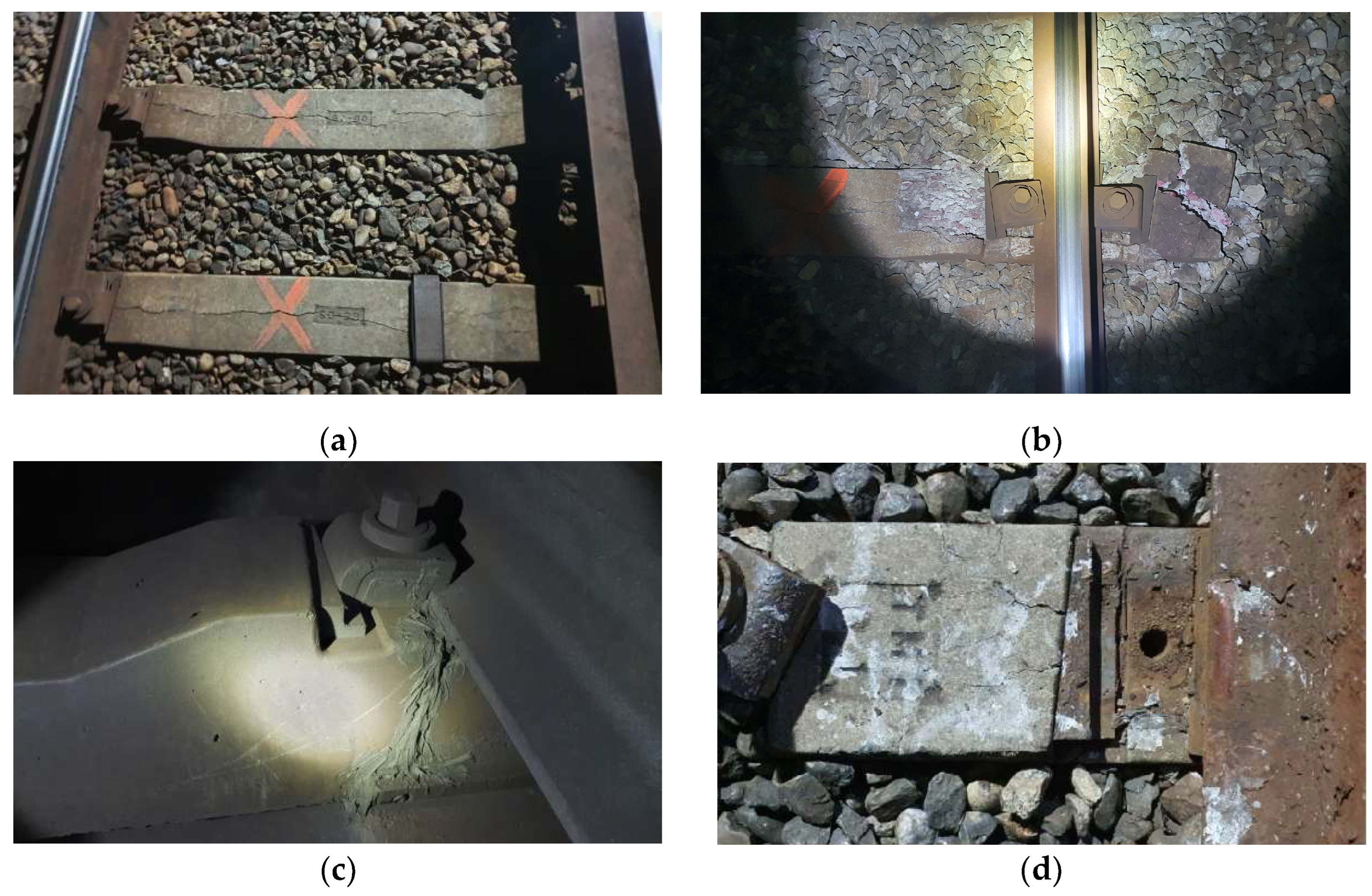
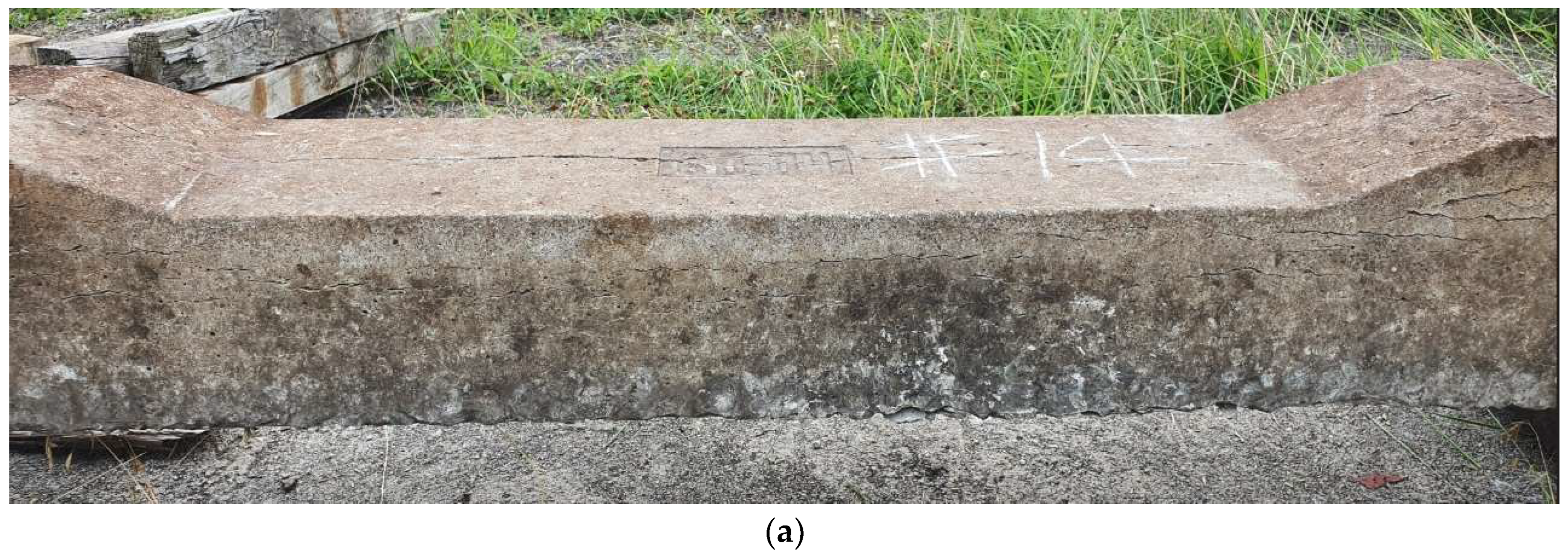
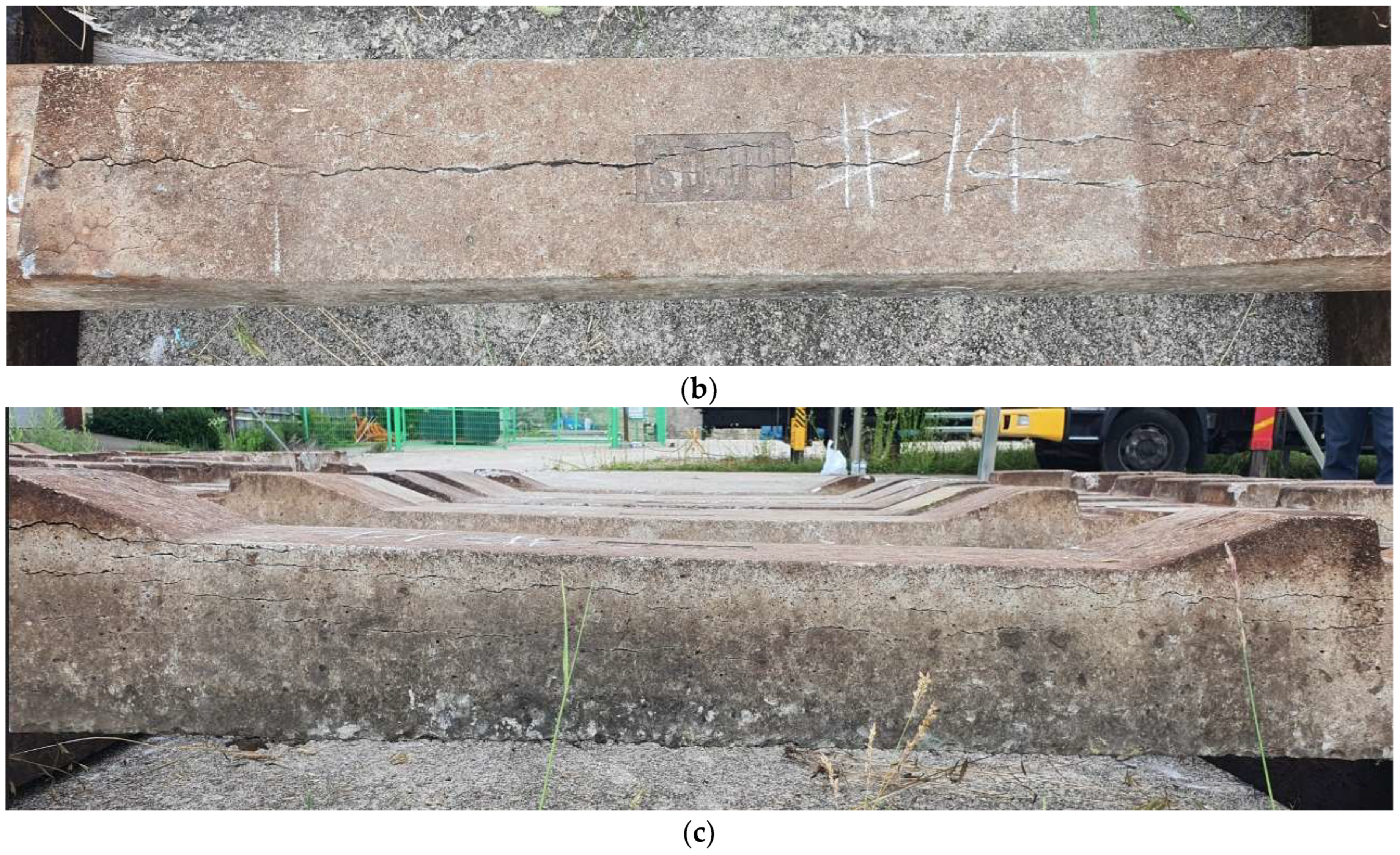
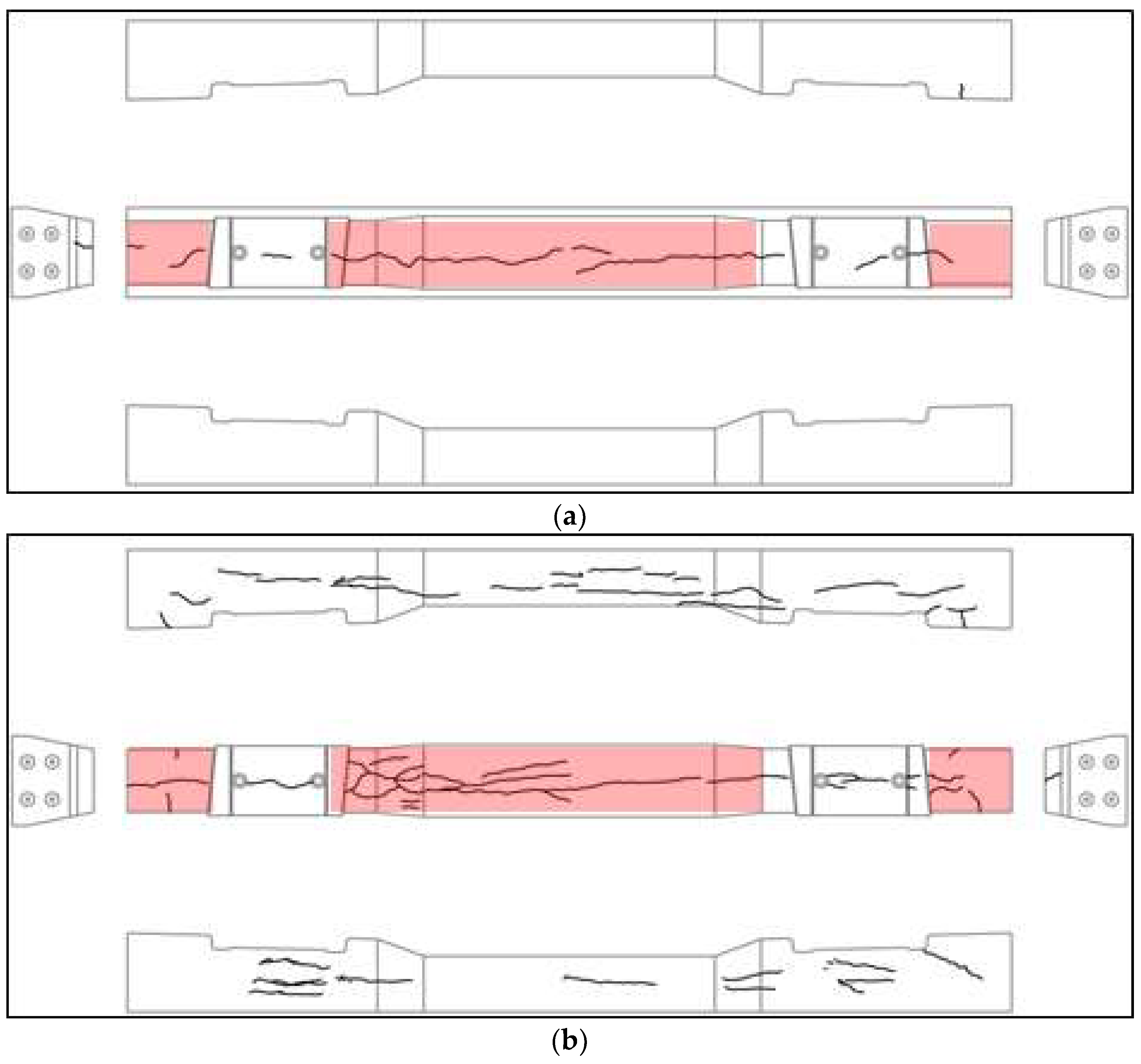
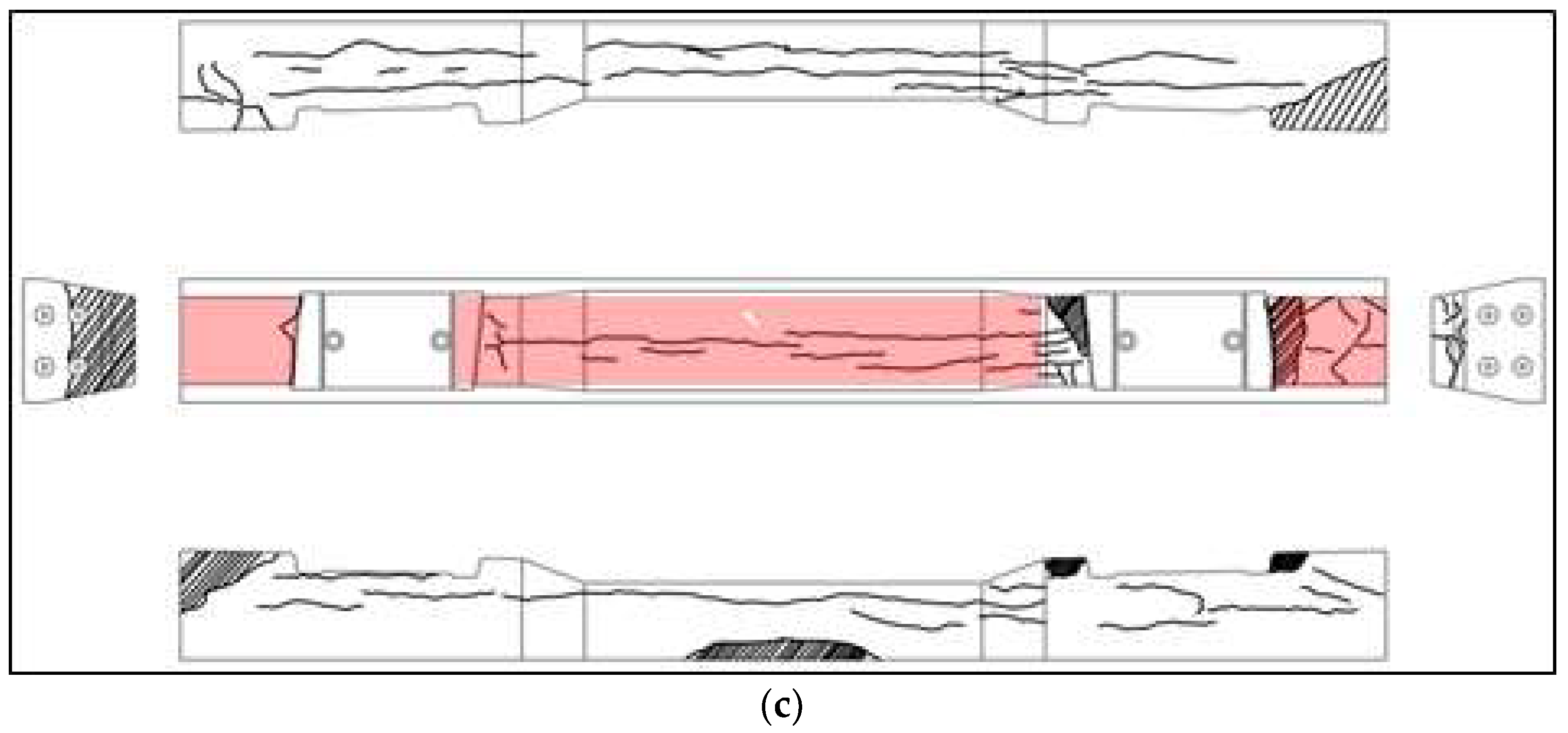
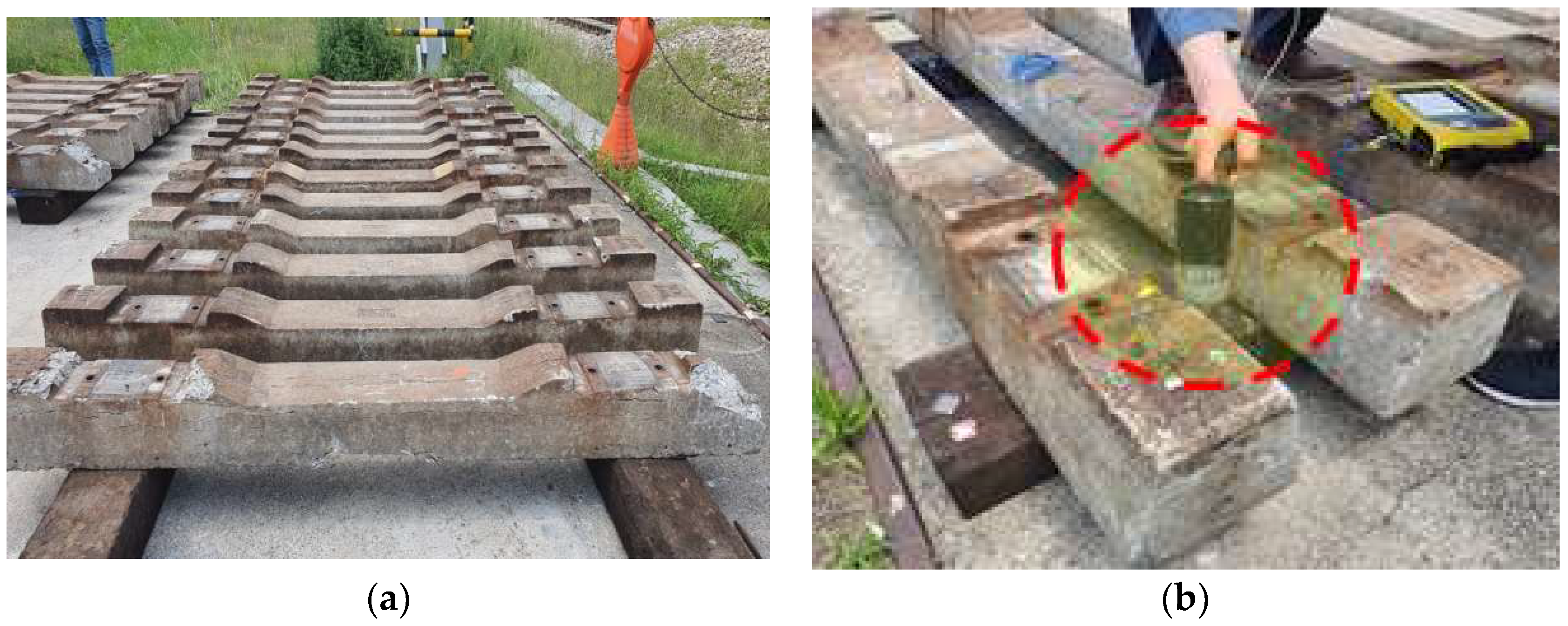

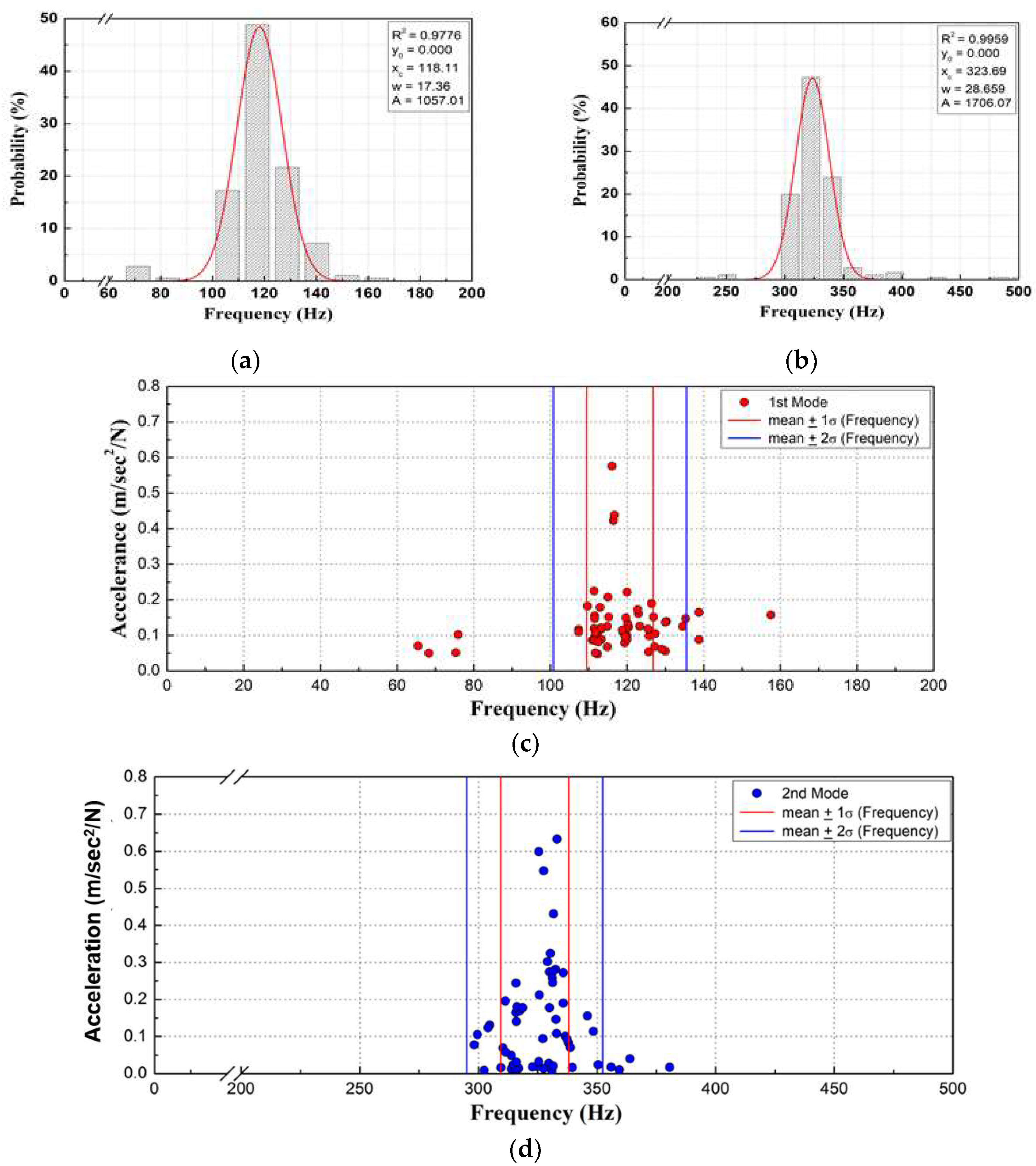

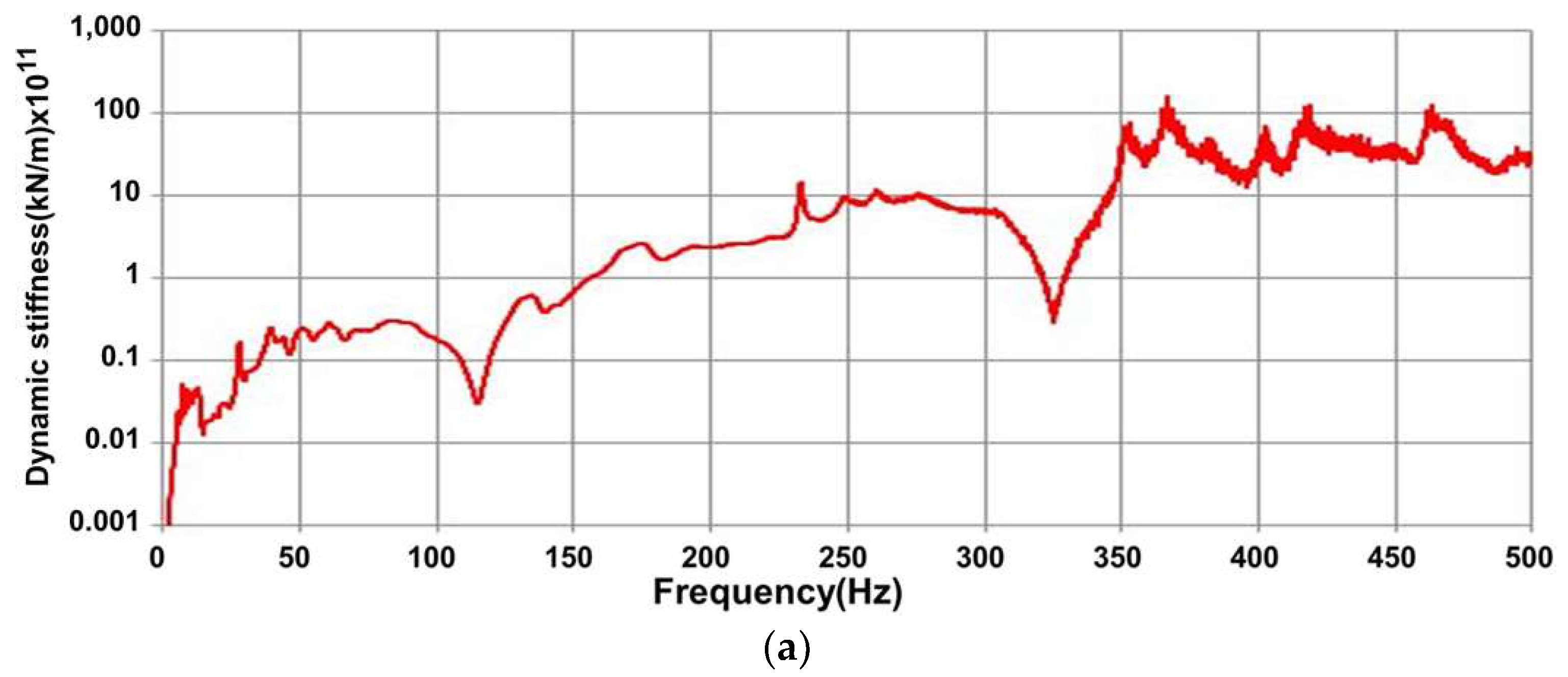

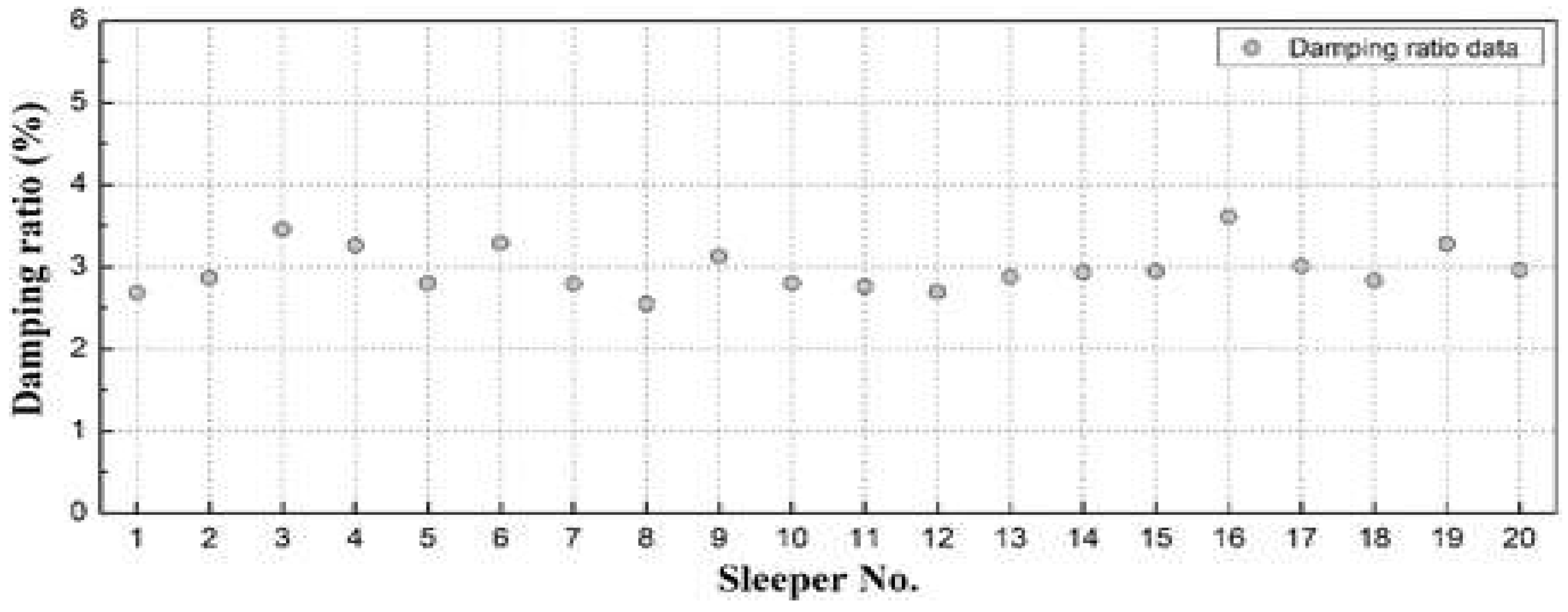


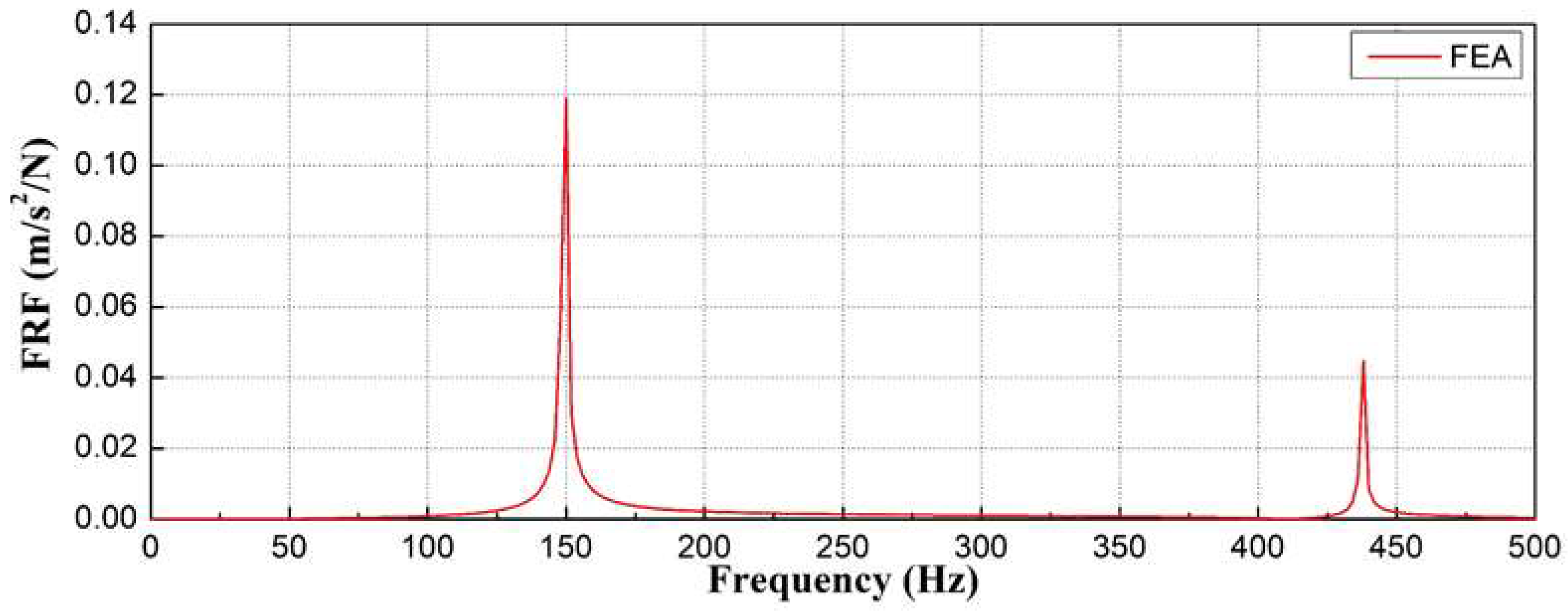

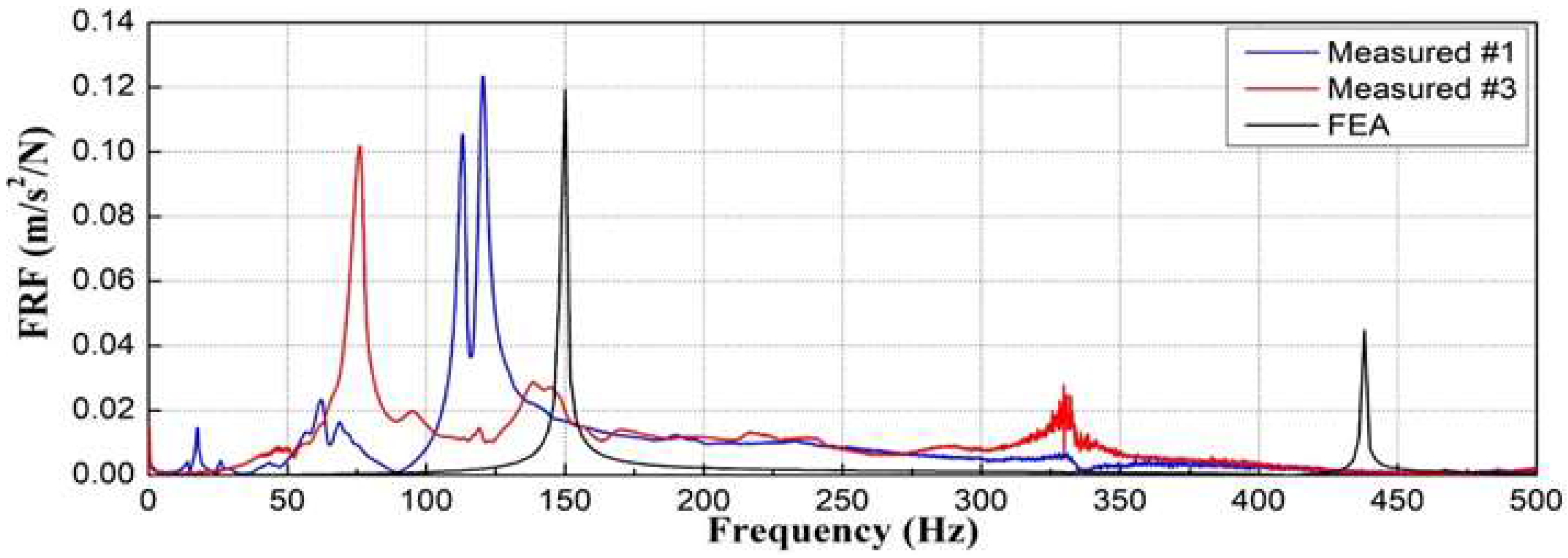
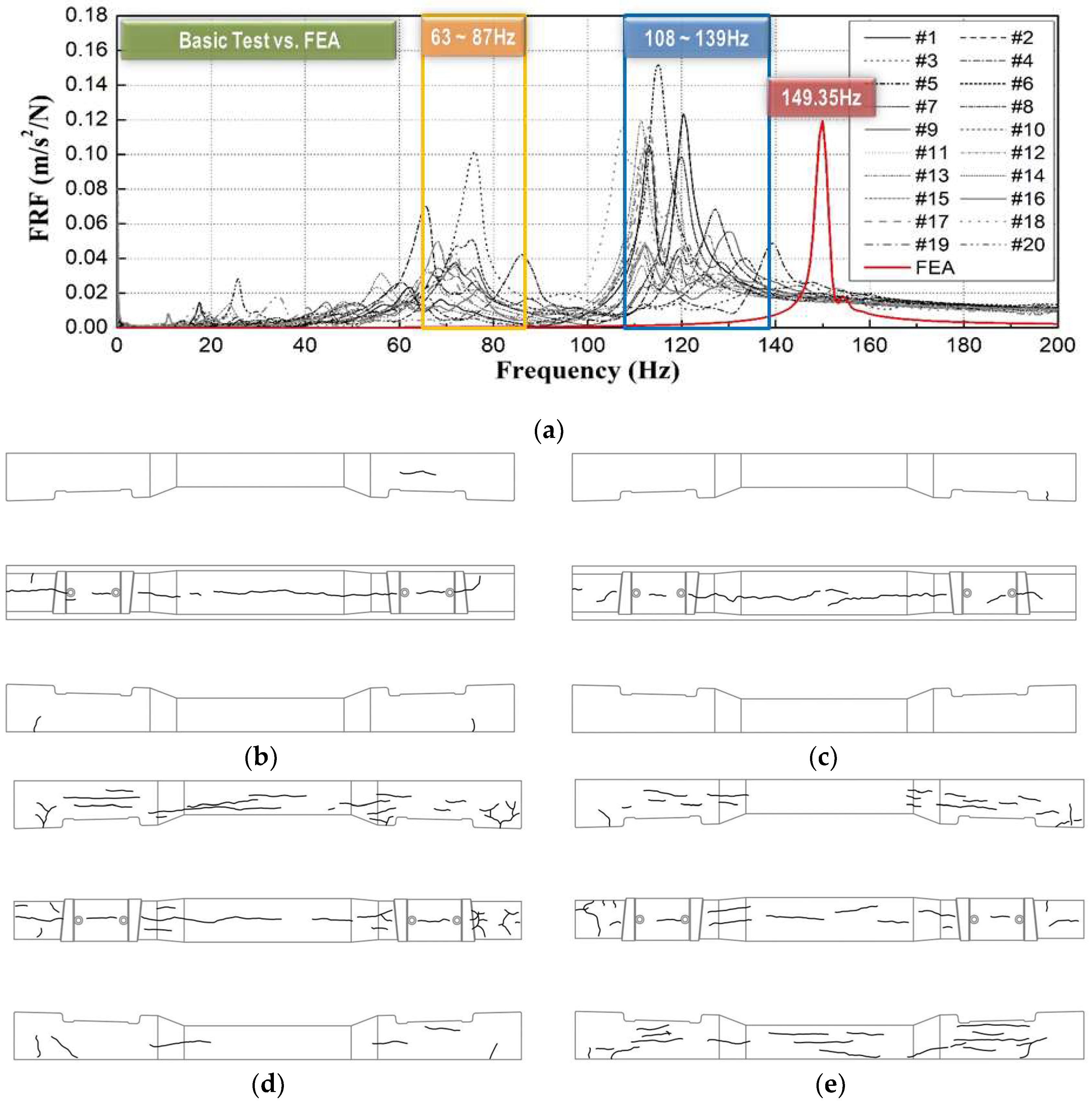
| Description | Evaluation Items | Methodology | Concrete Sleeper | A | B | ||
|---|---|---|---|---|---|---|---|
| Pre-Stressed Concrete | Reinforced Concrete Sleeper | ||||||
| E Type | A Type | ||||||
| Safety | Surface crack, defect, shoulder condition | Visual inspection | Entire | O | |||
| Pre-stressed exposed | Visual inspection | Entire | O | ||||
| Rebound hardness test | Non-destructive test | 3 sections/500 m | O | ||||
| Durability | Accumulated tonnage, velocity, used year | Maintenance data | Entire | O | |||
| Rebound hardness test | Non-destructive test | 3 sections/500 m | O | ||||
| Depth of carbonation | Field test | 1 section/500 m | O | ||||
| Surface crack | Visual inspection | Entire | O | ||||
| Sensor Type | Impact Hammer | Accelerometer | ||
|---|---|---|---|---|
| Channel | Ch. 1 | Ch. 2 | Ch. 3 | Ch. 4 |
| Sensitivity | 0.2301 mV/N | 1024.0 mV/g | 1018.0 mV/g | 993.2 mV/g |
| Items | Properties | |
|---|---|---|
| Sleeper type | Post-tensioning Sleeper | |
| Sleeper size (mm) | 212 × 240 × 2300 | |
| Compressive strength (MPa) | 59 | |
| Post-tensioning steel bar | Tensile strength (MPa) | 1230 |
| Diameter (mm) | Ø9.2 | |
| Length (mm) | 2240 | |
| Post-tensioning force (kN/EA) | 66.1 | |
| Sleeper supporting condition (spring stiffness) | Wooden sleeper supporting condition (200 kN/mm) | |
Disclaimer/Publisher’s Note: The statements, opinions and data contained in all publications are solely those of the individual author(s) and contributor(s) and not of MDPI and/or the editor(s). MDPI and/or the editor(s) disclaim responsibility for any injury to people or property resulting from any ideas, methods, instructions or products referred to in the content. |
© 2023 by the authors. Licensee MDPI, Basel, Switzerland. This article is an open access article distributed under the terms and conditions of the Creative Commons Attribution (CC BY) license (https://creativecommons.org/licenses/by/4.0/).
Share and Cite
Choi, J.-Y.; Shin, T.-H.; Kim, S.-H.; Chung, J.-S. Structural Integrity Assessment of Concrete Sleepers by Modal Test Technique. Materials 2023, 16, 5614. https://doi.org/10.3390/ma16165614
Choi J-Y, Shin T-H, Kim S-H, Chung J-S. Structural Integrity Assessment of Concrete Sleepers by Modal Test Technique. Materials. 2023; 16(16):5614. https://doi.org/10.3390/ma16165614
Chicago/Turabian StyleChoi, Jung-Youl, Tae-Hyung Shin, Sun-Hee Kim, and Jee-Seung Chung. 2023. "Structural Integrity Assessment of Concrete Sleepers by Modal Test Technique" Materials 16, no. 16: 5614. https://doi.org/10.3390/ma16165614
APA StyleChoi, J.-Y., Shin, T.-H., Kim, S.-H., & Chung, J.-S. (2023). Structural Integrity Assessment of Concrete Sleepers by Modal Test Technique. Materials, 16(16), 5614. https://doi.org/10.3390/ma16165614







